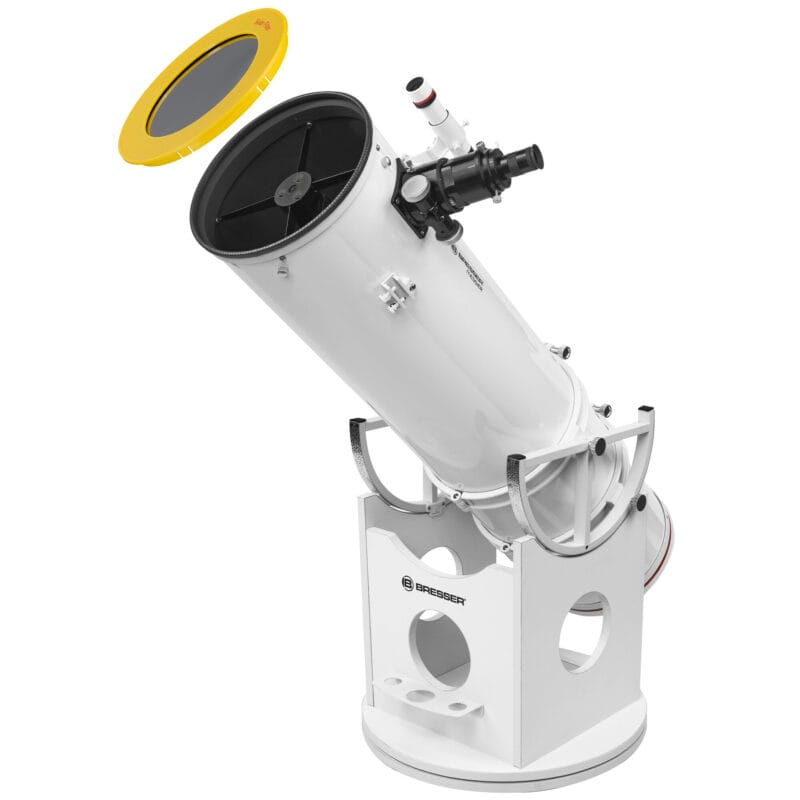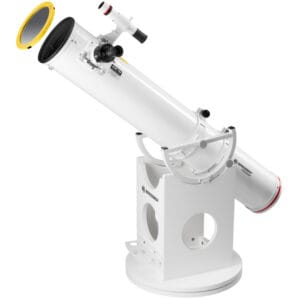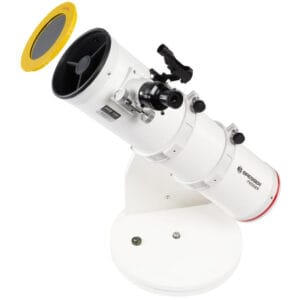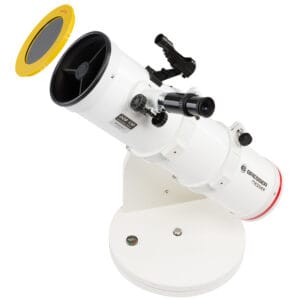Those who have a Bresser Messier telescope buys, gets more than a standard beginner's instrument. This series is known to enthusiasts as the line in which Bresser displays its best optics and mechanics.
Where many entry-level models focus on low cost and quick sales, the Messier is built with one goal: to deliver performance you normally only see from more expensive brands.
The name “Messier” refers to the famous French astronomer Charles Messier, who in the eighteenth century compiled his catalog of deep-sky objects including the popular Andromeda galaxy. Not coincidentally, then, the Bresser Messier series is intended for anyone who wants to see more than just the moon.
Why the Bresser Messier telescope series stands out
The power of the Bresser Messier telescope is in the optical purity. Unlike many cheaper telescopes, this series uses parabolic main mirrors. That seems like a small detail, but the difference is spectacular: a parabolic mirror focuses light more precisely, keeping the image sharp to the edge at high magnifications.
With a spherical mirror, which you often find in the Bresser Nano or Spica, stars distort at magnifications above 100x. With the Messier, they remain perfectly round, even at 200x. This makes the telescope suitable for planetary observations and for the Orion Nebula, Andromeda Nebula or globular cluster M13.
Users call the Messier “the sweet spot” for those who want to go just beyond the entry level without paying hundreds of dollars extra. We asked one of our beginner customers about his experience with the Bresser 150/1200. His response was as follows:
“The Messier 150P is the first telescope I can really call serious. The optics are good, the mount feels solid, and it surpasses anything I tried before in this price range.”
The build quality: sturdy, stable and future-proof
What immediately stands out about a Bresser Messier telescope is its rugged construction. No flimsy plastic focuser, but a metal rack-and-pinion-focuser that runs smoothly and focuses precisely. This seems trivial, but at high magnification it is crucial: a fraction of play can make the difference between a sharp Saturn image or a shaky blur.

The Messier Dobson models use a full wooden rocker box with Teflon bearings for smooth movement. The EQ versions (such as the Messier NT-150/750 on EXOS-1) are on sturdy aluminum tripods with fine adjustments, allowing easy tracking of planets.
A remarkable number of users cite the mechanics as a strong point. One reviewer wrote:
“I didn't expect a telescope in this price range to feel so solid. The focuser holds even heavy eyepieces well and the Dobson base turns smoothly, without jerking.”
In short: where most entry-level models vibrate or bend, the Messier remains stable.

Optical performance: what you see with it
With a Bresser Messier telescope you literally open up a new universe. The 130- and 150-millimeter models are ideal for planetary observations as well as deep-sky objects. Under dark skies you will see:
- The moon in detail, with sharp edges around Clavius and Tycho.
- Jupiter with its cloud bands and the four Galilean moons.
- Saturn With the Cassini separation in the rings.
- The Orion Nebula (M42) as a bright gas cloud with visible star formation area.
- Globular cluster M13 in Hercules, in which individual stars become visible at 150x magnification.
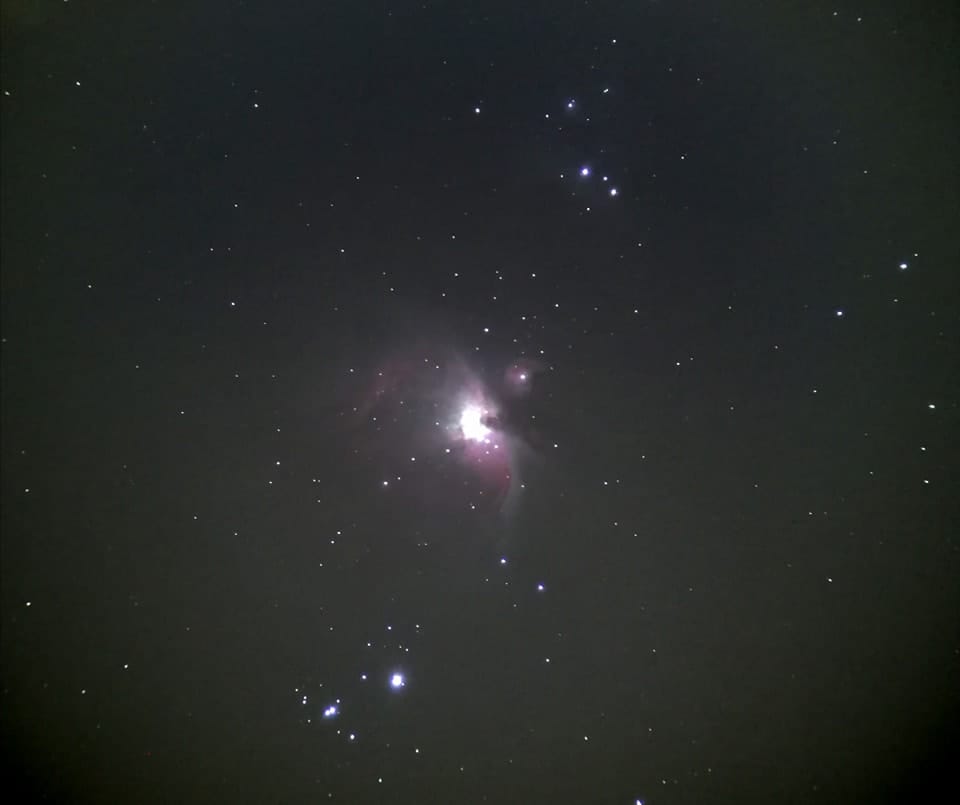
User reports confirm that the optics are surprisingly bright. One buyer wrote:
“I compared him to a Sky-Watcher of the same size. Messier showed more contrast and less light scattering around bright stars.”
This is partly because of the FMC coating on the mirrors and lenses, which increases light transmission and reduces reflections.
Bresser Messier Dobson - the favorite among hobbyists
Of all the models, the Bresser Messier 150P Dobson the most praise. This telescope combines simplicity with performance: no complicated tripods or motors, but pure optical power.
One experienced user summed it up pithily:
“The Messier 150P is the telescope I recommend to everyone. You can see everything a beginner could want with it - and it remains fun as you grow.”
Bresser Messier N 150/750 telescope Messier DOB
€ 369,00The Bresser Messier N 150/750 telescope Messier DOB comes with 150 mm parabolic Newton mirror, compact Dobson mount, 2 eyepieces, 10 and 25 mm (1.25 inch), red-dot viewfinder, rotating star chart and manual.
What makes the 150P attractive is that the mirror is large enough to show deep-sky objects, but the scope still remains light and portable. The 200P variant goes a step further: under dark sky conditions, nebulae become visible with texture and depth.
The Messier Dobson 10” (254/1270) is often compared to the popular Sky-Watcher Skyliner 250PX. Differences are minor, but the Messier scores points on workmanship and focuser quality.
Bresser Dobson Telescope N 254/1270 Messier Hexafoc DOB
Bresser Dobson Telescope N 254/1270 Messier Hexafoc DOB comes with 25 mm Super Plössl, 6x30 viewfinder, solar filter and 2” Hexafoc focuser - powerful 10" Newton reflector for deep-sky and planetary observations with maximum light output.
The EQ models: for those who want to track and photograph
Not everyone chooses a Dobson. Those who like to track accurately or even experiment with astrophotography look to the Messier-EQ models.
The Bresser Messier NT-150/750 EQ3 or NT-203/1000 EXOS-2 offer the same parabolic mirrors, but with a equatorial mount. Allows you to track the rotating celestial sky with a single axis, ideal for longer observations or short exposure photographs.
Although the mount is not professional-level, it is excellent for visual observation and beginning photography. Users especially praise the EXOS-2 mount because of its stability and expandability with tracking motors.
“I bought a tracking motor with it and now use it for planetary photography with a ZWO camera. The results are amazing for this price range.”
Accessories and expandability
Those who have a Bresser Messier buys, usually get one or two eyepieces included. These are functional, but not the end of the world.
To get the most out of the telescope, it pays to invest in better eyepieces, such as Plössl or Orthoscopic eyepieces from 10-12 mm. These offer more contrast and a more comfortable viewing area.
The Messier series uses standard 1.25-inch mounts, so virtually all aftermarket eyepieces and filters will fit.
Popular upgrades among users:
- 2x achromatic Barlow lens for planetary observation (with some it is already included, this is always mentioned on our product page)
- Moon or color filters for more contrast.
- UHC filter for nebulae.
The telescope is also compatible with T2 adapters, so you can connect DSLR(normal camera) or astro cameras to it.
Comparison with cheaper Bresser lines
The difference between a Bresser Messier telescope and cheaper Bresser models (such as the Nano or Spica) is greater than the price suggests.
The Messier is built for durability, with metal parts, larger mirrors and true coatings. In contrast, the Nano series often uses plastic gears, lightweight tripods and spherical mirrors.
Users who switched from Nano to Messier describe the difference as “night and day.”.
“I thought I just didn't know how to focus. Until I tried a Messier, only then did I see how sharp a telescope can be.”
It explains why experienced observers often advise: buy a smaller Messier rather than a larger Nano.
Our advice - buying Bresser Messier: the smart choice
A Buy Bresser Messier is investing in quality that grows with your experience. The optics are sharp, the construction solid and the capabilities extensive. Whether you want to study the moon, see the bands of Jupiter or photograph the Orion Nebula, the Messier series delivers.
Those who are serious about getting started with astronomy without immediately heading toward a thousand euros will find in the Bresser Messier telescope the perfect balance between price and performance.
At Telescoop.co.uk, we often recommend the Messier 150P Dobson as the best all-rounder for visual perception, or the NT-203/1000 EXOS-2 For those who want to grow toward astrophotography.
With the right accessories a good eyepiece, a sturdy tripod and possibly a filter you will have an instrument that will last for years and amaze you again and again!




